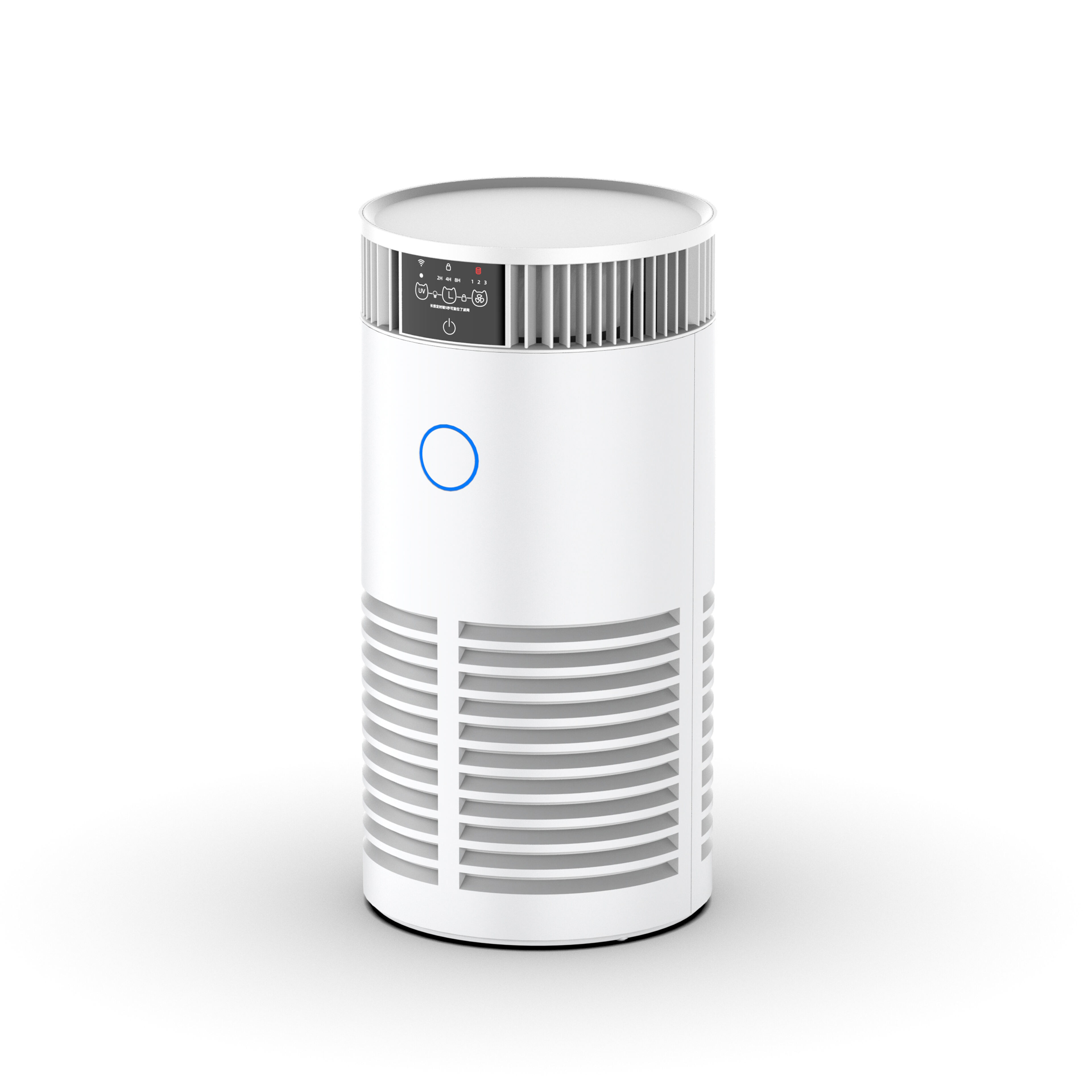How Advanced Filter Systems Keep Your Home Air Clean and Safe
How Air Filtration Systems Improve Home Air Quality Mechanics
The Science Behind HEPA and UV-C Filtration
The core of effective air filtration systems lies in the science behind HEPA and UV-C filtration. HEPA filters, or High-Efficiency Particulate Air filters, are renowned for their ability to eliminate up to 99.97% of airborne particles larger than 0.3 microns, such as dust, pollen, and pet dander. These particles are significant contributors to poor indoor air quality. UV-C filtration complements this by using ultraviolet light to eradicate bacteria and viruses, adding a vital layer of protection for respiratory health. According to research by the Environmental Protection Agency (EPA), indoor air can be 2-5 times more polluted than outdoor air, underscoring the necessity of implementing effective filtration systems for healthier living environments.
Role of Ionizers in Neutralizing Airborne Contaminants
Ionizers play a crucial role in air purification by emitting negatively charged ions that attract the positively charged allergens and pollutants. This interaction results in the pollutants falling to the ground, significantly reducing airborne contaminants. Studies indicate that ionizers can lead to a 50% reduction in harmful pollutants, proving their effectiveness in improving air quality. However, it's essential to use ionizers in conjunction with other filtration methods to prevent the buildup of ozone, a potential byproduct that can harm respiratory health if present in excess.
Smart Technology Integration for Real-Time Air Quality Monitoring
Modern air filtration systems incorporate smart technologies that allow real-time air quality monitoring. These systems enable users to track and adjust air quality levels via mobile apps, ensuring optimal indoor conditions. The integration of air quality sensors drives automatic adjustments to filtration based on detected pollutants, maintaining an ideal atmospheric balance. Market analysts predict a significant 30% growth in demand for smart air purifiers by 2025, highlighting the increasing consumer preference for systems that offer both advanced technology and superior air quality management.
Key Benefits of Advanced Air Purification Systems
Reducing Allergens and Asthma Triggers
High-quality air purifiers, particularly those equipped with HEPA filters, are effective at significantly reducing indoor allergens such as dust mites, mold spores, and pollen, which are known asthma triggers. According to the American Asthma Foundation, proper air filtration can decrease asthma attacks by an estimated 25%. Regular use of air purifiers can lead to notable improvements in respiratory health, especially for individuals with allergies. This is crucial because allergens can aggravate the respiratory system, leading to increased asthma symptoms.
Eliminating Pet Dander and Odors
Advanced air purification systems play a vital role in capturing pet dander, a prevalent irritant in homes with pets. Activated carbon filters in these systems effectively neutralize unpleasant odors, ensuring a fresher home environment. With statistics indicating that over 67% of U.S. households have pets, the importance of effective air purification cannot be underestimated for pet owners. Activated carbon filters bind with odor-causing particles, providing a simple yet powerful solution for maintaining indoor air quality.
Blocking Wildfire Smoke and Outdoor Pollutants
Air filtration systems with advanced particulate filters are essential in homes threatened by wildfire smoke and other outdoor pollutants. These systems trap fine particulate matter, which is critical for protecting health during smoke events. The World Health Organization (WHO) has highlighted increasing levels of outdoor pollutants linked to wildfires, underscoring the necessity for effective home solutions. Utilizing air purifiers during high-smoke conditions can reduce indoor air pollution levels by 75%, ensuring that indoor air remains cleaner and safer.
Essential Features in Modern Air Filtration Systems
Multi-Stage Filtration: From Pre-Filters to Activated Carbon
Effective air purification is achieved through multi-stage filtration systems utilizing pre-filters, HEPA filters, and activated carbon. These systems are designed to tackle a broad range of pollutants. A study highlighted that multi-stage filtration systems enhance the removal of volatile organic compounds (VOCs) along with other airborne particles. The ability to integrate different types of filters offers customizable air quality solutions, making it possible to address specific contaminant concerns. Whether it's reducing allergens or blocking odors, such systems ensure a comprehensive approach to improving indoor air quality.
Energy-Efficient Air Circulation Fans
Energy-efficient air circulation fans are pivotal in enhancing the performance of air filtration systems. High-efficiency fans optimize airflow to ensure that filters function effectively, providing comprehensive coverage throughout a room. Fans marked with the Energy Star label can lead to energy savings of up to 30% compared to conventional models. Moreover, thoughtful airflow design reduces the need for larger units in spacious areas, which promotes more sustainable energy consumption. This not only benefits the environment but also helps consumers save on energy costs while maintaining optimal indoor air quality.
App-Controlled Customization for Large Rooms
Modern air filtration systems are increasingly equipped with app-controlled features, enhancing convenience and performance. These capabilities allow users to adjust settings remotely, ensuring optimal air quality management without manual intervention. Customizable options such as fan speed adjustment and filter replacement reminders enhance user experience and system efficiency. Research indicates that consumers who utilize app-controlled devices engage more proactively in managing their indoor air quality, leading to better overall outcomes. This feature is particularly beneficial for managing large rooms where maintaining consistent air quality can be challenging.
For more insights on enhancing indoor air quality, consider reviewing additional user guides and expert tips available through leading HVAC solution providers.
Top Air Filtration Systems for Home Use
Home 3-in-1 HEPA Filter Air Purifier with Aromatherapy
The Home 3-in-1 HEPA Filter Air Purifier with Aromatherapy is a versatile unit that combines HEPA filtration, activated carbon, and aromatherapy functionalities. This integration allows consumers to enjoy clean air with added benefits, such as pleasant scents, without needing additional devices. Product reviews highlight high customer satisfaction, with users noting perceived health benefits and enhanced air quality from its regular use.
Remove Pet Hair Air Purifier with UV-C Indicator
Designed specifically for pet owners, the Remove Pet Hair Air Purifier with UV-C Indicator employs a HEPA filter to capture pet hair and utilizes UV-C technology for sterilization. The built-in UV-C indicator provides users with vital feedback on the effectiveness of the unit, ensuring optimal performance. Consumers often report a reduction in allergy symptoms, making it a beneficial product for households with pets.
210m³/h Ionizer Air Purifier with APP Control
The 210m³/h Ionizer Air Purifier excels in large room applications with its capability to efficiently circulate air and reduce pollutants over spaces up to 600 sq ft. Its app control feature enables real-time monitoring and adjustment of air quality settings, optimizing the filtration process. Experts rate its advanced technology highly for its effectiveness in reducing airborne pollution, making it a top choice for comprehensive air management.
Maintaining Optimal System Performance
Filter Replacement Schedules for Peak Efficiency
Regular filter replacements are essential for maintaining high air quality and ensuring the longevity of air filtration systems. Experts suggest changing HEPA filters every 6-12 months, depending on usage and environmental pollution levels. Adhering to this replacement schedule can prevent a decrease in filtration capacity, which can lead to the recirculation of pollutants within your home. Neglecting this routine can compromise indoor air quality and diminish the performance of the air filtration system.
Balancing Humidity with Air Purifier-Humidifier Combos
Integrating air purifiers with humidifiers helps create an optimal indoor environment by regulating both pollutants and humidity levels. Maintaining a humidity range of 30-50% is ideal, as it prevents mold growth and enhances respiratory comfort. Research indicates that these combined systems effectively improve indoor air quality while making living spaces more comfortable. Managing both air purification and humidity can significantly elevate overall health and well-being in a home.
Troubleshooting Common Air Quality Sensor Issues
Understanding how to troubleshoot common issues with air quality sensors is crucial for ensuring your air purification systems operate effectively. Often, problems arise from dust buildup, incorrect sensor placement, or faulty wiring. Ensuring the accuracy of these sensors is vital for effective pollution monitoring. Consulting the manufacturer’s guidelines can offer solutions to most issues, often resolving problems without the need for professional assistance. Proper maintenance and troubleshooting help maintain the system’s efficiency and reliability.

 EN
EN
 AR
AR
 NL
NL
 FR
FR
 DE
DE
 EL
EL
 HI
HI
 IT
IT
 JA
JA
 KO
KO
 PL
PL
 PT
PT
 ES
ES
 ID
ID
 VI
VI
 TH
TH
 TR
TR
 MS
MS


.jpg)
